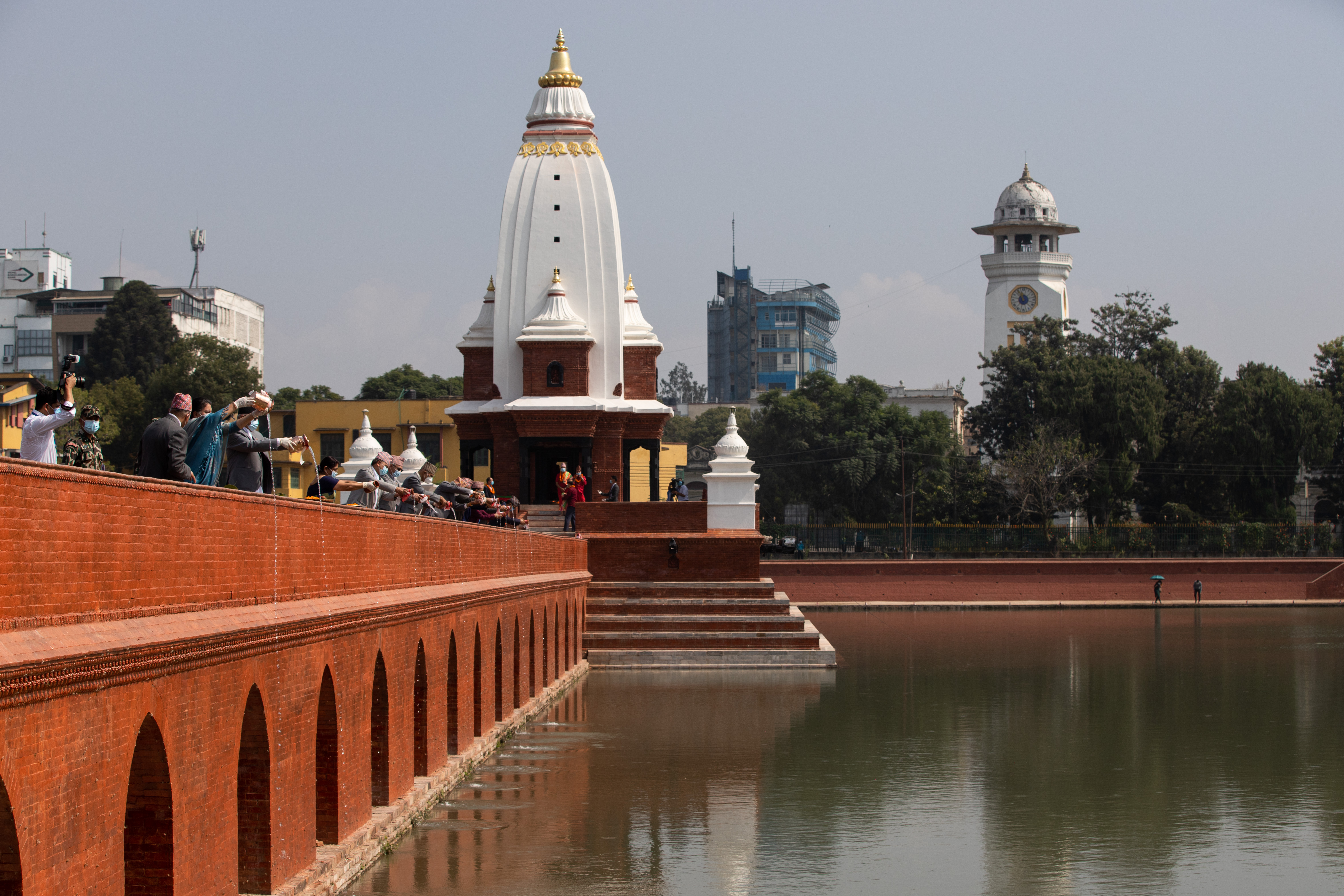Preserving Rani Pokhari
Preserving Rani Pokhari
Published: 10:03 am Nov 11, 2020

With relevant similarity to what it must have looked like when it was first built by King Pratap Malla in 1671, the 350-year-old Rani Pokhari at the centre of the capital city is all set to welcome worshippers this Bhai Tika, in line with the long standing tradition of opening this temple only once in a year. Damaged by the earthquake in 2015, the iconic pond has been built using the traditional style, technology and construction materials used during the Malla era. The use of the russet Dachhi appa (brick) in the construction of the historic temple, causeway and pond perimeter has helped this pond regain its original beauty. Quite recently, I happened to observe the inauguration of the restored building of Durbar High School, Nepal’s first ever school, and this iconic pond in the heart of the city by President Bidhya Devi Bhandari. Being a student of architecture, I stood on the overhead bridge nearby, captivated by the exquisite architectural and ecological masterpiece that displays the meticulous craftsmanship of that time. To me, the entire perimeter of the pond is an engineering feat of that time, which clearly reflects an excellent understanding of the ecological balance and cultural importance. I could see Ghanta Ghar in the east and Durbar High School in a brilliant display to the west, and this would enchant any passersby. Today, Rani Pokhari, reconstructed by the Nepal Government, and Durbar High School by the Chinese government, both stand shining opposite each other to become the city’s pride and joy. Both these historic buildings have, after all, been such a visually intoxicating place that they are a feast to the eyes and to the senses, and both have interesting stories to tell. The restoration journey has just begun, and there are several historical monuments still waiting to be restored. It is, however, not sure if the reconstructed Rani Pokhari will be able to sustain its beauty for long. As historic and important as it is, it is set amidst a surrounding teeming with contemporary life. The bustling streets on each side and rising dust can pollute this site. Knowingly or unknowingly, passersby and vendors are dirtying the area. This is also a way of saying that we still lack both a sense of collective responsibility and belonging. To conserve such historical places and maintain cleanliness, we must think not of ourselves but of others, more importantly of our clean and beautiful city, think not of the past but of the future and the generations ahead. Thus the government should take the initiative to issue a set of guidelines for its conservation. That would be in the best interest of all.



